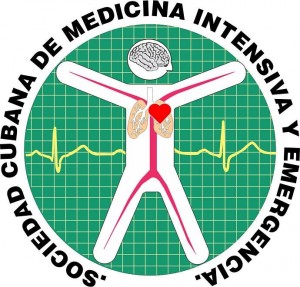Precisión del <em>point-of-care ultrasound</em> para la evaluación de diferentes enfermedades en el servicio de Urgencias
Palabras clave:
point-of-care ultrasound, ecografía, precisión diagnósticaResumen
Introducción: La ecografía point of care ultrasoundes, actualmente, un método rápido y preciso para diagnosticar múltiples enfermedades en el servicio de Urgencias.Objetivo: Evaluar la precisión diagnóstica de la ecografía point of care ultrasound en comparación con el patrón de referencia de los informes del servicio de Radiología/Cardiología.
Métodos: Se realizó un estudio prospectivo, de enero de 2017 a abril de 2018, con 459 pacientes que se presentaron en el servicio de Urgencias, del Royal Bournemouth Hospital y Christchurch Hospital por diversas enfermedades. Se calculó la sensibilidad, especificidad, así como los valores predictivos positivos y negativos. Se comparó la interpretación de la ecografía de médicos de urgencias con el gold standard de los informes del servicio de Radiología (ecografía) y Cardiología (ecocardiografía). Para el análisis de los resultados, se calculó el índice kappa de concordancia.
Resultados: La sensibilidad, especificidad, valores predictivos positivos y negativos, y el índice de precisión (kappa) de la ecografía point of care ultrasound fueron, por orden, 92,3 %, 100 %, 100 %, 96,3 %, 0,94 para la trombosis venosa profunda; 94,4 %, 98,6 %, 94,4 %, 98,6 %, 0,93 para el aneurisma de la aorta abdominal; 91,4 %, 92,3 %, 88,9 %, 94,1 %, 0,92 para la función del ventrículo izquierdo; 93,8 %, 91,73 %, 88,2 %, 95,7 %, 0,89 para la neumonía; 93,3 %, 92,3 %, 87,5 %, 96,0 %, 0,84 síndrome intersticial.
Conclusiones: Los resultados alcanzados demuestran la precisión de la ecografía point of care ultrasound en la evaluación integrada de diversas enfermedades en el servicio de Urgencias. Por tanto, se pueden realizar intervenciones tempranas en los pacientes.
Descargas
Citas
1. Dietrich CF, Goudie A, Chiorean L, Cui XW, Gilja OH, Dong Y, et al. Point of care ultrasound: a WFUMB position paper. Ultrasound in Medicine & Biology. 2017 Jan 1;43(1):49-58.
2. Buerger AM, Clark KR. Point-of-care ultrasound: a trend in health care. Radiologic Technology. 2017 Nov 1;89(2):127-38.
3. Whitson MR, Mayo PH. Ultrasonography in the emergency department. Critical Care. 2016 Dec 1;20(1):227.
4. Pathan SA, Mitra B, Mirza S, Momin U, Ahmed Z, Andraous LG, et al. Emergency Physician Interpretation of Point‐of‐care Ultrasound for Identifying and Grading of Hydronephrosis in Renal Colic Compared with Consensus Interpretation by Emergency Radiologists. Academic Emergency Medicine. 2018 Oct;25(10):1129-37.
5. Dresden S, Mitchell P, Rahimi L, Leo M, Rubin-Smith J, Bibi S, et al. Right ventricular dilatation on bedside echocardiography performed by emergency physicians aids in the diagnosis of pulmonary embolism. Annals of Emergency Medicine. 2014 Jan 1;63(1):16-24.
6. Weekes AJ, Thacker G, Troha D, Johnson AK, Chanler-Berat J, Norton HJ, et al. Diagnostic accuracy of right ventricular dysfunction markers in normotensive emergency department patients with acute pulmonary embolism. Annals of Emergency Medicine. 2016 Sep 1;68(3):277-91.
7. Secko MA, Lazar JM, Salciccioli LA, Stone MB. Can junior emergency physicians use E‐point septal separation to accurately estimate left ventricular function in acutely dyspneic patients? Academic Emergency Medicine. 2011 Nov;18(11):1223-6.
8. Ünlüer EE, Karagöz A, Akoğlu H, Bayata S. Visual estimation of bedside echocardiographic ejection fraction by emergency physicians. Western Journal of Emergency Medicine. 2014 Mar;15(2):221.
9. Satılmış Siliv N, Yamanoglu A, Pınar P, Celebi Yamanoglu NG, Torlak F, Parlak I. Estimation of cardiac systolic function based on mitral valve movements: An accurate bedside tool for emergency physicians in dyspneic patients. Journal of Ultrasound in Medicine. 2019 Apr;38(4):1027-38.
10. Prada G, Fritz AV, Restrepo-Holguín M, Guru PK, Díaz-Gómez JL. Focused Cardiac Ultrasonography for Left Ventricular Systolic Function. The New England Journal of Medicine. 2019 Nov 21;381(21):e36.
11. Chavez MA, Shams N, Ellington LE, Naithani N, Gilman RH, Steinhoff MC, et al. Lung ultrasound for the diagnosis of pneumonia in adults: a systematic review and meta-analysis. Respiratory Research. 2014 Dec 1;15(1):50.
12. Long L, Zhao HT, Zhang ZY, Wang GY, Zhao HL. Lung ultrasound for the diagnosis of pneumonia in adults: a meta-analysis. Medicine. 2017 Jan;96(3).
13. Al Deeb M, Barbic S, Featherstone R, Dankoff J, Barbic D. Point‐of‐care ultrasonography for the diagnosis of acute cardiogenic pulmonary edema in patients presenting with acute dyspnea: a systematic review and meta‐analysis. Academic Emergency Medicine. 2014 Aug;21(8):843-52.
14. Rubano E, Mehta N, Caputo W, Paladino L, Sinert R. Systematic review: emergency department bedside ultrasonography for diagnosing suspected abdominal aortic aneurysm. Academic Emergency Medicine. 2013 Feb;20(2):128-38.
15. Summers SM, Scruggs W, Menchine MD, Lahham S, Anderson C, Amr O, et al. A prospective evaluation of emergency department bedside ultrasonography for the detection of acute cholecystitis. Annals of Emergency Medicine. 2010 Aug 1;56(2):114-22.
16. Hilsden R, Leeper R, Koichopolos J, Vandelinde JD, Parry N, Thompson D, et al. Point-of-care biliary ultrasound in the emergency department (BUSED): implications for surgical referral and emergency department wait times. Trauma Surgery & Acute Care Open. 2018 Jul 1;3(1).
17. Pedraza García J, Valle Alonso J, Ceballos García P, Rico Rodríguez F, Aguayo López MÁ, Muñoz-Villanueva MD. Comparison of the accuracy of emergency department-performed point-of-care-ultrasound (POCUS) in the diagnosis of lower-extremity deep vein thrombosis. Journal of Emergency Medicine. 2018 Jan 1;54(5):656-64.
18. Lee JH, Lee SH, Yun SJ. Comparison of 2-point and 3-point point-of-care ultrasound techniques for deep vein thrombosis at the emergency department: A meta-analysis. Medicine (Baltimore). 2019 May;98(22):e15791.






